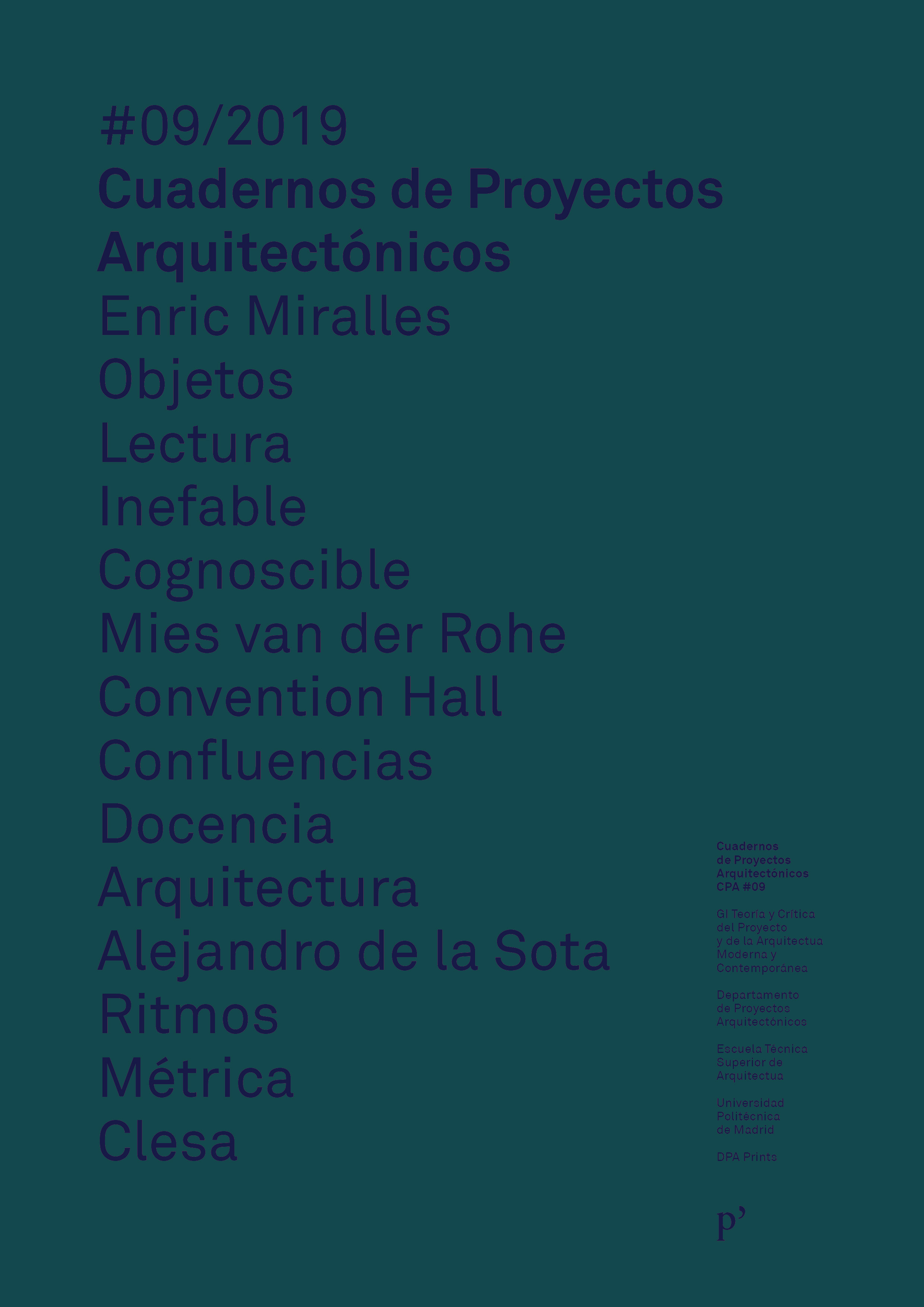
The Knowable and the Ineffable:
An Object-Oriented Reading of Enric Miralles’ Design Approach.
Cuadernos de Proyectos Arquitectónicos 9, 2021
Go to English version︎︎︎
Go to Spanish version︎︎︎
This paper links the current philosophical stance of Object-Oriented Ontology (OOO) to Enric Miralles’ design approach in the late 20th century. On the one hand, Graham Harman’s thinking has influenced architects’ methods, principles, and value systems since the early 2010s, claiming a deeper reality of things beneath their appearance and our knowledge of them. OOO proposes an indirect approach to things through aesthetics and rhetoric, safeguarding the autonomy of the object. On the other hand, Enric Miralles emerges as a historical figure whose poetic understanding of architecture was concerned with something beyond practical needs or cosmetic issues. In this context, this paper examines two issues (autonomy and aesthetics) to connect the two authors. When the architectural project (AP) appears as an autonomous object, any epistemological effort exerted on it becomes incomplete, and the project offers multiple results and readings. For that, both authors advocate their second shared major point: aesthetics as a form of cognition. Similar notions of mimesis, allusion, and metaphor refer to the project’s ineffable reality and access some of its various knowable profiles. Under these overlaps, both oeuvres complement each other. First, Miralles appears as a significant precedent for the current discussion about objects in architecture, especially when he instrumentalized the mechanisms of aesthetics not only for the audience’s experience but also for the design process. Second, Harman’s postulates offer, retrospectively, a solid theoretical ground for Miralles’ intellectual approach to architecture and design methods; that is, an ontological framework that unifies the particularity of each project while maintaining its inexhaustible expressions.
